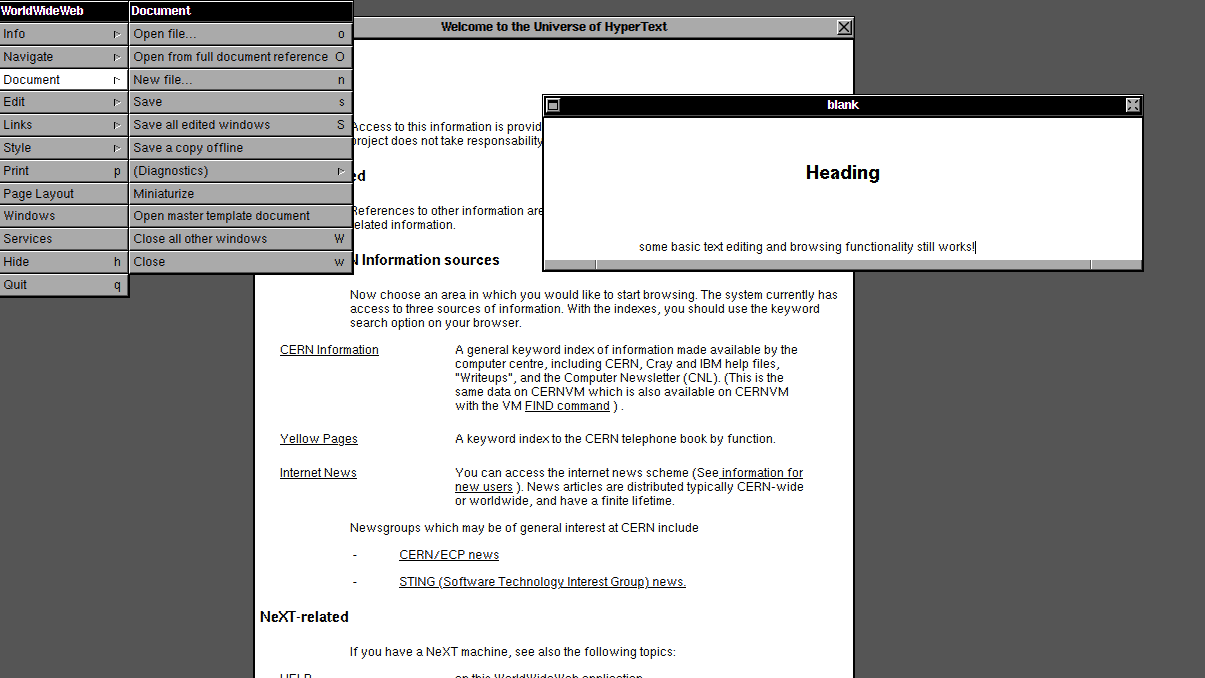
The Web Design Museum is playing its part in the Christmas festivities by highlighting the 34th anniversary of the release date of the first-ever web browser and web page editor, an application called WorldWideWeb, and the museum has created a nifty web app emulator to celebrate the occasion. You can try the emulator here.
The WorldWideWeb browser is a truly seminal piece of computer software, to say the least. Developed by the inventor of the Internet, it was the first application to allow Internet access and made creating and editing hypertext (HTML) from within the application super accessible. The WorldWideWeb browser would later be renamed to Nexus so the browser wouldn't be confused with the term for the "World Wide Web (Internet)" it's used to connect to.
The original WorldWideWeb application, released on Christmas of 1990, was developed by industry legend Tim Berners-Lee, who wrote the initial version of the application and finished it "some time before [we] closed for Christmas," per his own blog post on the topic. WorldWideWeb was also written on a PC running the NeXTSTEP operating system made by NeXT Computer, rather than Windows.
Savvy tech historians may recall that NeXT Computer was founded by Steve Jobs, like Apple, and was his primary stomping ground from 1983 to 1996, a 12-year stint after which Apple re-acquired NeXT and re-hired Steve Jobs as its CEO. NeXT is also known as the operating system used by id Software to develop both original Doom FPS games and the full 3D follow-up, Quake.
Happy 34th Birthday WorldWideWeb – the first browser! On December 25, 1990, at CERN, a British physicist and internet pioneer Tim Berners-Lee created the world's first web browser, called WorldWideWeb.Try the browser emulatorhttps://t.co/1ZxhMhWruR#InternetHistory pic.twitter.com/Py17yhauZbDecember 25, 2024
While WorldWideWeb certainly has no modern browsing utility (even if you could connect to modern web pages with it, the modern Internet is far more demanding than machines of the 90s could ever handle and reliant on standards those machines do not support), it's still a truly fascinating piece of computing history. The "emulator" developed by Web Design Museum, usable in your current browser, will allow you to experiment with the first-ever web browsing interface based on NeXT and browse some saved pages, but actually browsing the live web with it won't work.
For those among you who want an idea of just how primitive the technology behind the Internet used to be in its early stages— and how this primitive tech trailblazed the way for modern browsers and operating systems to take their present foothold— Web Design Museum's WorldWideWeb emulator is a fun way to waste some time and ponder the history of the computing space. Considering just how important it wound up being to NeXT Computer's success and Steve Jobs eventually taking back Apple, we'd almost certainly be in a completely different era of tech today without it, even if someone else had beat Berners-Lee to the punch of the first fully-functioning web browser.







